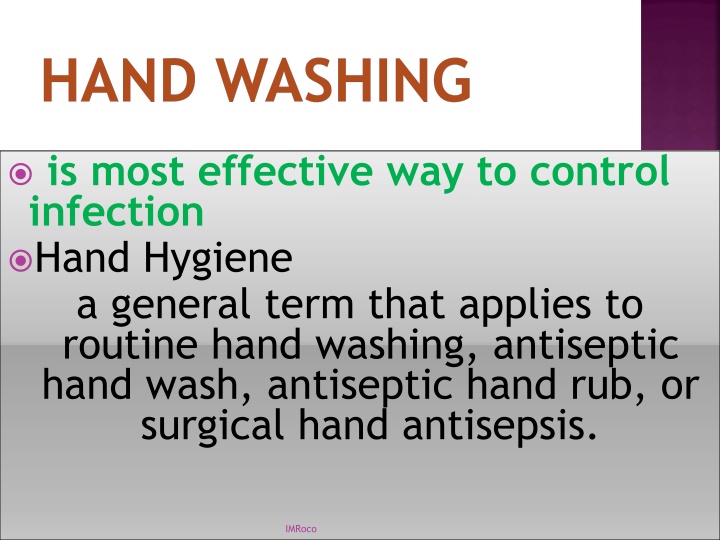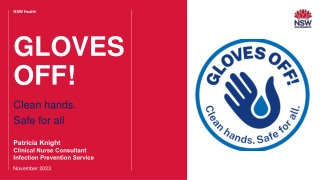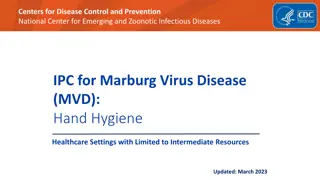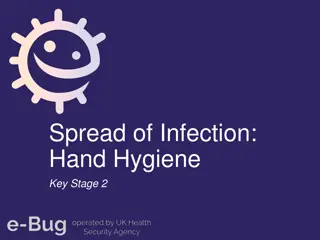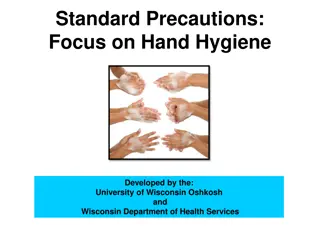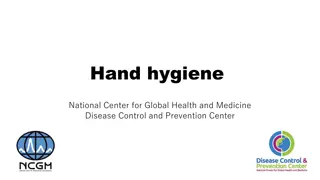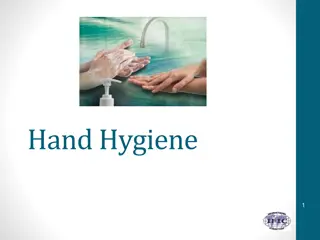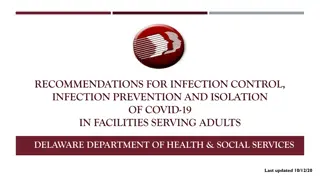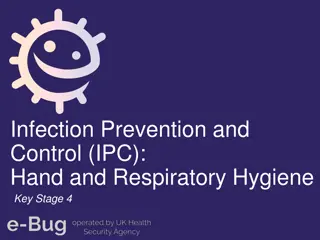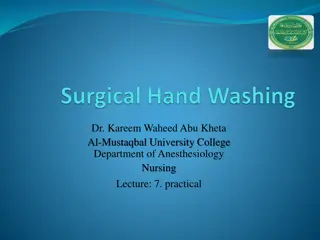Comprehensive Guide to Hand Hygiene in Infection Control
Hand hygiene is crucial in infection control, encompassing various methods like routine hand washing, antiseptic hand wash, and surgical hand antisepsis. Different types of hand hygiene include routine, antiseptic, and surgical antisepsis for removing or destroying bacterial infection. Indications for hand hygiene include treating each patient, handling contaminated objects, and when hands are visibly soiled. The purposes of hand washing are to reduce microorganisms on hands, prevent transmission, and avoid cross-contamination. Proper preparation involves keeping nails short, removing jewelry, and checking for skin breaks. References are available for further learning.
Download Presentation

Please find below an Image/Link to download the presentation.
The content on the website is provided AS IS for your information and personal use only. It may not be sold, licensed, or shared on other websites without obtaining consent from the author.If you encounter any issues during the download, it is possible that the publisher has removed the file from their server.
You are allowed to download the files provided on this website for personal or commercial use, subject to the condition that they are used lawfully. All files are the property of their respective owners.
The content on the website is provided AS IS for your information and personal use only. It may not be sold, licensed, or shared on other websites without obtaining consent from the author.
E N D
Presentation Transcript
HAND WASHING is most effective way to control infection Hand Hygiene a general term that applies to routine hand washing, antiseptic hand wash, antiseptic hand rub, or surgical hand antisepsis. IMRoco
DIFFERENT TYPES OF HAND `HYGIENE` Routine Hand wash Antiseptic Hand wash Antiseptic Hand rub Surgical Antisepsis {Removal/destroying up of `Bacterial Infection`} IMRoco
INDICATIONS FOR HAND HYGIENE Before and after treating each patient (e.g., before glove placement and after glove removal). After barehanded touching of inanimate objects likely to be contaminated by blood, saliva, or respiratory secretions. When hands are visibly soiled. Before re-gloving, after removing gloves that are torn, cut, or punctured. IMRoco
PURPOSES OF HAND WASHING : 1- To reduce the number of micro- organism on the hands . 2- To reduce the risk of transmission of microorganisms to oneself and the clients. 3- To reduce the risk of cross contamination among clients . IMRoco
Preparation : 1-Nails should be kept short . 2-Remove jewelry . 3- Check hands for breaks in the skin IMRoco
Performance of the procedure IMRoco
Reference: Craven & Hirnle. Fundamentals of Nursing Human Health and function IMRoco
